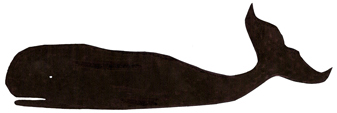1859
In August 24 of that year, a fire started at about noon.
It was the biggest fire in the city's history, and it destroyed several blocks, in the heart of the business district of the city.
This prompted the purchase of the first steam fire engine.
Here's more:
Property was lost was in the area of Water Street, north of Middle.
The fire started in William Wilcox's planing mill on the east side of Water Street.
A strong south-east wind blew the fire north, and before the alarm was given it leaped across to the west side of Water street and destroyed all the shops on Water Street up to North street and worked it's way westward to 2nd street.
Along the wharves, the flames took all of the buildings and their contents in that area. Wilcox's lumber yard burned.
Cargoes of oil stored in the vicinity or Richmond and Wilcox's caught fire and the ship John & Edward at the head of the dock was aflame up to the top of the masts and was destroyed.
Oil ran from the storage area to the wharf and into the water, floating on the surface. It caught fire so that the river was burning.
Several ships had to be untied from the dock and pushed away out into the river to keep from burning.
Rickettson, the author of a history of New Bedford took a small boat and sculled up the river.
He observed that many, many oil barrels had burst, and the oil was floating several inches deep on the surface of the river.
From where he was he could see that the fire had spread north.
The houses on Second street were on fire, and the conflagration would have certainly burned a massive path north through the city had not the fire department decided to blow up a house in it's path and were thus able to get control of the fire.
The blast was heard throughout the city.
14,000 barrels of oil were stored under seaweed on the north-west corner of North Water and North streets. A number of citizens thrashed out the burning embers that fell with large brooms made of brush.
The fire department kept water on the seaweed to ensure that it didn't catch fire.
A lot of oil casks burst sending rivulets of oil in different directions and even into the river.
Ponds of pure spermaceti were formed.
After the fire was out, every sort of vessel that could hold oil was employed and gathering the oil or "Dipping Ile" became a highly profitable business for some time.
Some persons got as much as 25 barrels, and it was bought by the refining companies for 25 cents per gallon.
When the Daly building was blown up, Chief Engineer Tillghast Tomkins suffered a gash on his head from a piece of flying timber, and though his mind was sound, for the rest of his life he was troubled about his responsibility of his actions of that day.
Blowing up the building, however, stopped the fire from spreading in that direction.
A man who was an "Oil Dipper" fell into the water and was "Done in oil" before he was slid to safety.
Stored bomb lances occasionally exploded sounding like artillery on a battle field.
Of the homes and buildings that burned many were wood working shops, blacksmith shops and various types of ship supply shops for boats with a lot of supplies and stock for trade stored in them.
At 2 o'clock, the engineers blew up the house of Mrs. Joseph Maxfield to stop the spread there.
In all on land alone, 20 buildings were destroyed and a number of sheds as well as 8,000 barrels of oil.
Total loss in the value of the time was $254,575.00.
Of that only, $6,579.00 was insured.
As a result of this fire within a few months (in February) a more efficient steam engine rolled into town, and there slowly followed a replacement of more of the hand engines with steam engines.
The first steam engine was housed in a brick building on the North-East corner of Pleasant Street and Mechanics Lane.
The first hand engine had come to the city in 1772 and now the era of hand engines was fading. |

